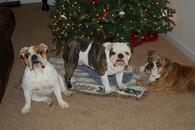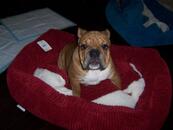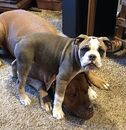Geaux Bullie
New member
- Sep 10, 2013
- 1
- 0
- Country
- United States
- Bulldog(s) Names
- lil' Hoss
We are expecting our first baby this December!!! and while we could not be more excited we are not blind to the fact that our bulldog thinks, 1. he is a human 2. I am in fact his mommy and he loves his daddy 3. we should not hold or show attention to any other human children or furr babies in front of him and last 4. every toy or prospective toy for the baby is his. With that being said, WHAT CAN WE DO TO PREPARE?! He already sleeps in a large kennel so that is his private space. He is not a barker by nature so that does not concern us. Mostly he jumps when I have something he wants, nothing can be on the floor unattended and he is stronger than he thinks. 




